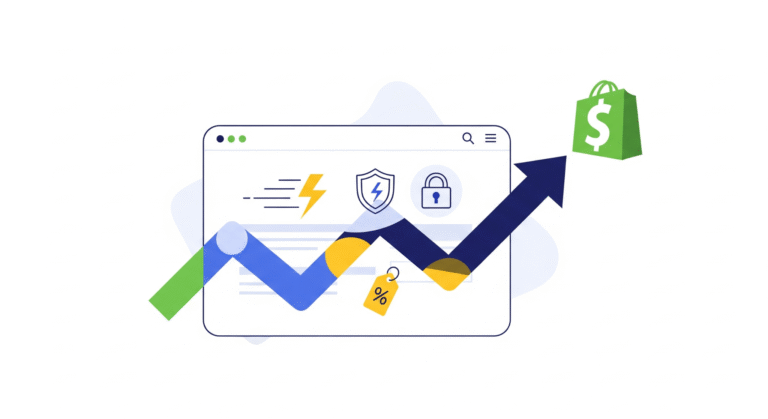Speed isn’t just about user experience it’s a ranking factor and a conversion trigger. A delay of just 1 second can drop conversions by 7%. In Shopify, where themes, apps, and scripts pile up quickly, keeping things fast takes discipline.
Step 1: Audit Your Theme
Most performance issues stem from overbuilt or outdated themes. Audit your current theme for:
- Render-blocking CSS/JS
- Unused or redundant Liquid snippets
- Third-party app scripts loading on every page
Use Shopify’s Online Store Speed report, Lighthouse, and GTMetrix to catch the culprits.

Step 2: Lazy Load All Media
Add loading=\"lazy\" to all images and use WebP format when possible. Also, defer non-critical scripts and track fonts using font-display: swap.
Example:
<img src=\"{{ image | img_url: '720x' }}\" loading=\"lazy\" alt=\"Product image\">
Step 3: App Audit & Cleanup
- Remove unused apps (even if they’re disabled)
- Use app alternatives that inject less code
- Consider native solutions through theme customization
“Speed is the silent salesperson your fastest pages often convert the most.”
Optimize Theme Code
- Replace inline styles with SCSS or theme CSS
- Minify Liquid templates
- Use CSS variables for consistent and scalable design tokens




